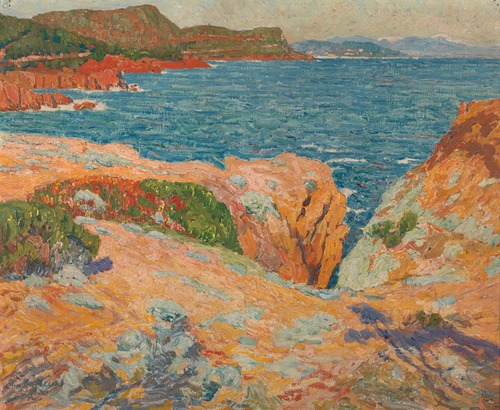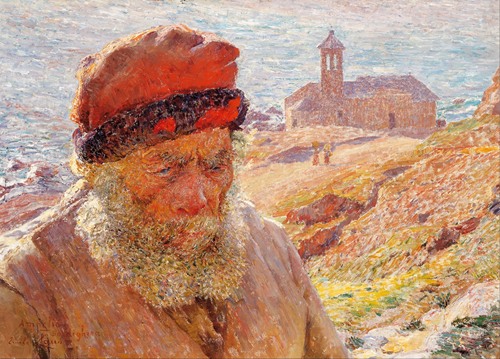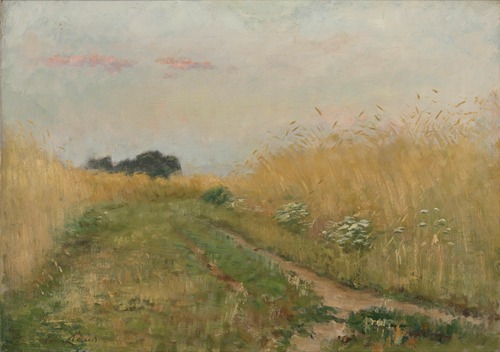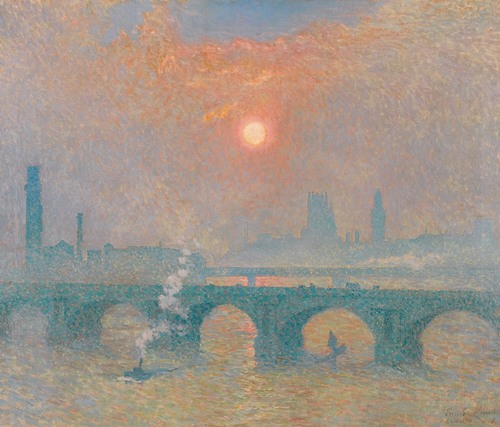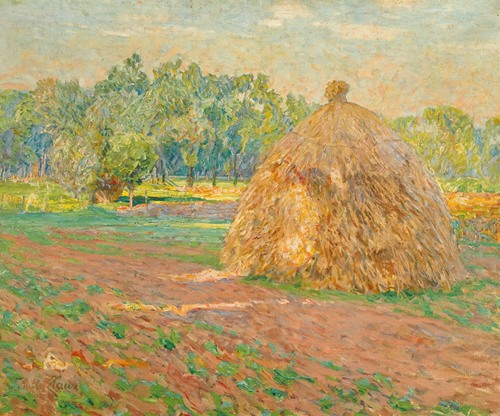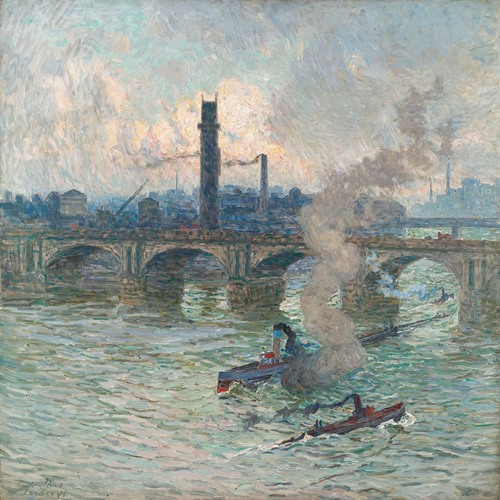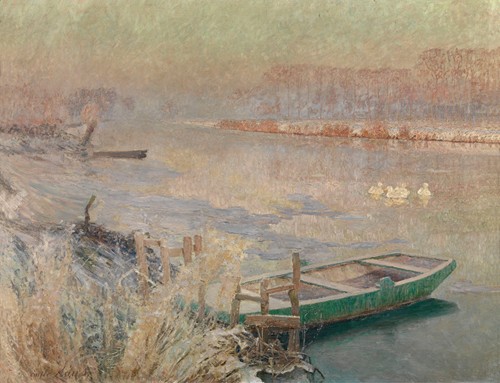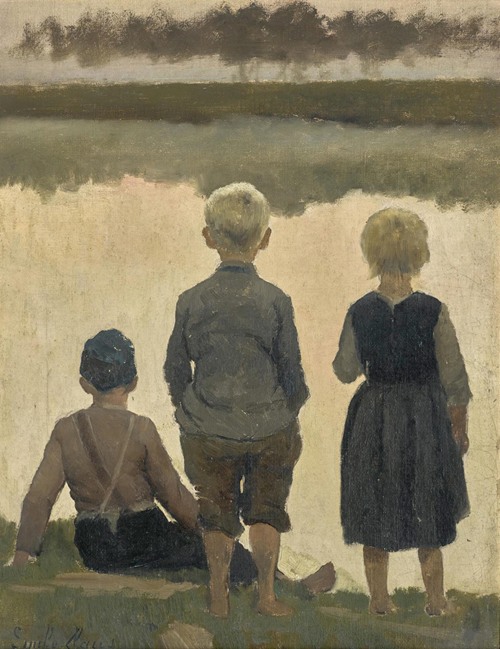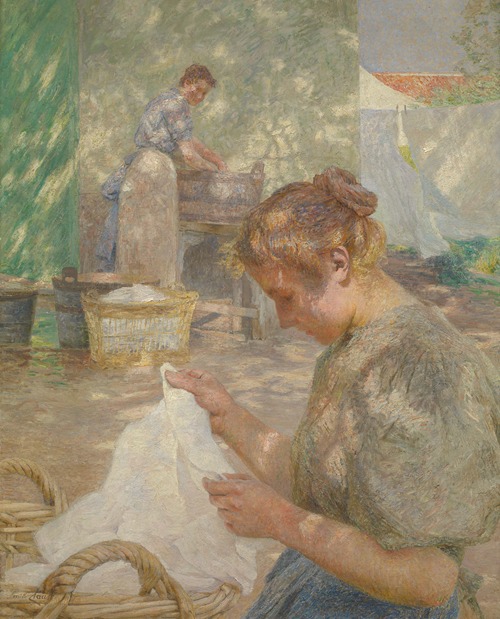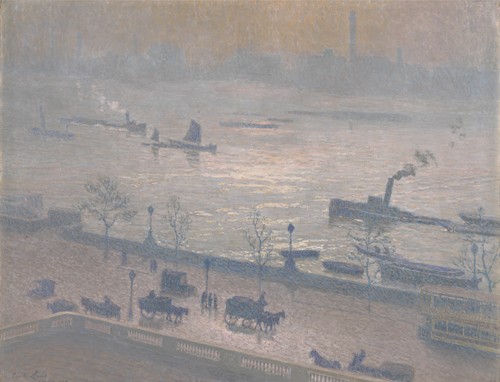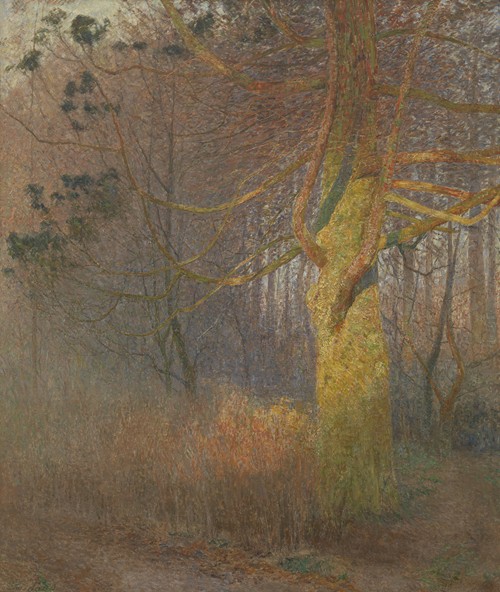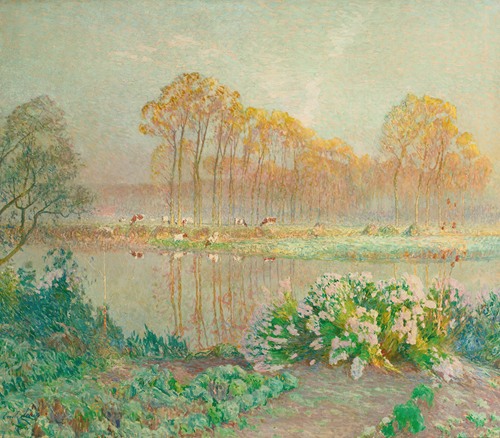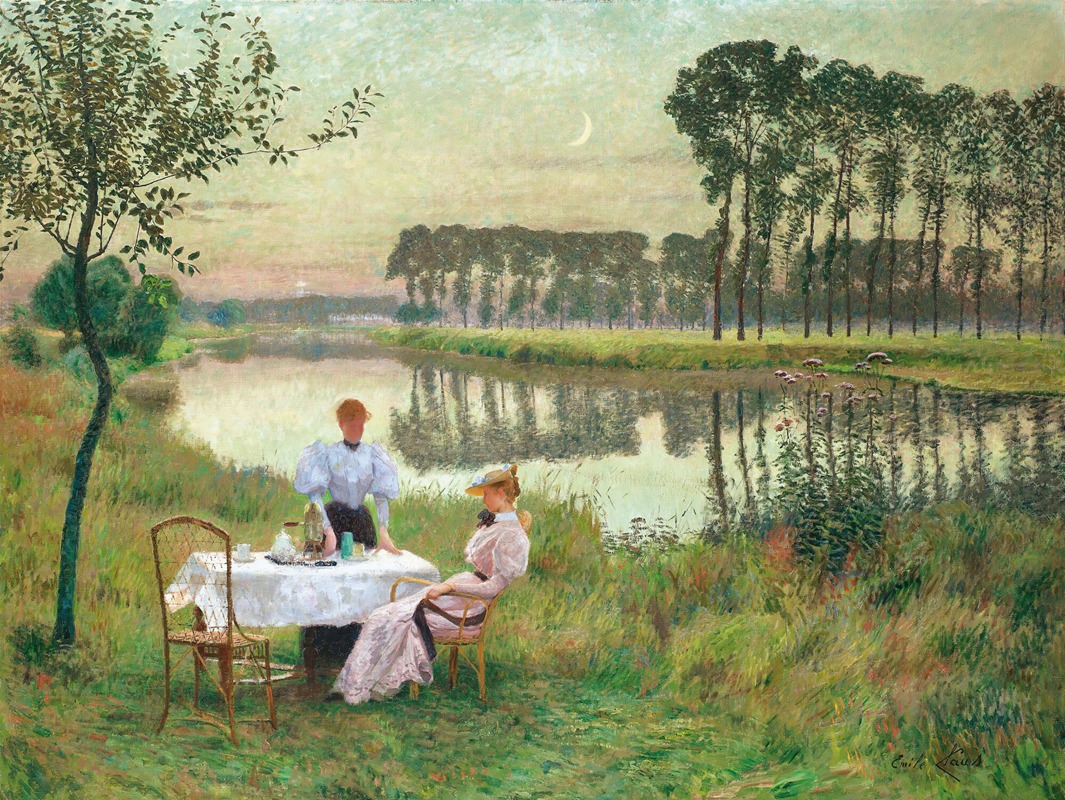

Emile Claus was a Belgian painter. Emile Claus was born on 27 September 1849, in Sint-Eloois-Vijve, a village in West-Flanders (Belgium), at the banks of the river Lys. Emile was the twelfth child in a family of thirteen. Father Alexander was a grocer-publican and for some time town councillor. Mother Celestine Verbauwhede came from a Brabant skipper’s family and had her hands full with her offspring.
As a child, Emile already loved drawing and on Sunday went three kilometres on foot to the Academy of Waregem (the neighbouring town) to learn how to draw. He graduated from the Academy with a gold medal. Although father Claus allowed him to take drawing classes, he did not fancy an artist's career for his son. Instead, he sent Emile as a baker’s apprentice to Lille (France). Emile learned French there but the job of a baker clearly did not appeal to him. He also worked for some time with the Belgian Railways and as a representative in the flax trade.
The urge to paint did not let go of Emile and he wrote a letter for help to the famous composer and musician Peter Benoit, who lived in nearby Harelbeke and was an occasional visitor of the family. Only with some effort, Peter Benoit managed to convince father Claus to allow his son to train at the Antwerp Academy of Fine Arts. Claus did have to pay for his studies himself though. After graduating, he stayed to live in Antwerp.
In 1883 Claus moved to cottage Zonneschijn ('Sunshine') in Astene, near Deinze (East-Flanders, Belgium), where he stayed until his death. From his living room, he enjoyed a beautiful view across the river Lys. The space and light of the country house clearly inspired him.
Artistically, Claus soon prospered. As a celebrity, he became a friend of the family with amongst others the French sculptor Auguste Rodin and the naturalist Émile Zola, and with the Belgian novelists and poets Cyriel Buysse, Emile Verhaeren, Pol de Mont and Maurice Maeterlinck. He travelled around the world to attend exhibitions of his work.
An important person in the life of Emile Claus was the painter Jenny Montigny. She followed master classes at his workshop in Astene and for years travelled back and forth between Ghent and Astene. Although Claus was 26 years older than she was, they began a relationship that would last until Claus' death. Another of his private students was the Belgian artist Anna De Weert. She, and her husband Maurice De Weert [nl], spent summers with him in the 1890s.
The First World War interrupted Claus' international success. He fled to London where he found a house and workshop at the banks of the river Thames. He returned in 1918.
From 1869 to 1874, Claus trained at the Antwerp Academy of Fine Arts with, amongst others, the landscape painter Jacob Jacobs. During his training, Claus attracted the attention of and found favour with the local upper middle class.
Artistically and financially, Claus soon prospered. The Antwerp Museum of Fine Arts purchased one of his works, and The Picknick (1887), his well-known painting showing a farmer’s family watching the Sunday outing of the urban bourgeoisie on the opposite bank of a small river (the Lys), was bought by the Belgian Royal Family.
Under the influence of Claude Monet, he developed a style that has been characterized as luminism. In 1904, he started the artist group Vie et Lumière ('Life and Light').
In 1918, at his return from London after World War I and with the dawn of expressionism, Claus found his fame diminished. In 1921, he was given a last survey exhibition in Brussels, where especially his London works (about the city and the river Thames) made a positive impression on the public.
Stimulated by his friend, the author Camille Lemonnier, and influenced by the French impressionists, like Claude Monet whose works he got to know during his trips to Paris in the 1890s, Claus gradually shifted from naturalistic realism to a very personal style of impressionism called 'luminism', because of the luminous palette he used.
Claus is considered to be the pioneer of Belgian luminism. In 1904, he founded the society Vie et Lumière ('life and light') and became known as the 'sun painter' and the 'painter of the Lys'. A magnificent example is his painting Cows crossing the Lys (1899), which shows a group of motley cows being herded across a small river, with sunlights reflecting off the moving water. The painting hangs in the Royal Museum of Fine Arts in Brussels (Belgium).
During the First World War, while in exile in London, he painted a series of views on the river Thames, known as "reflections on the Thames", in the style of Monet. They are his most traditional impressionist works. On 14 June 1924, Claus died in Astene. His last words were: "Bloemen, bloemen, bloemen …” ('Flowers, flowers, flowers'). The day before his death, he had painted a pastel of a bouquet of flowers, sent to him by Queen Elisabeth of Belgium. Claus is buried in his own garden in Astene and a street is named after him in Brussels.
